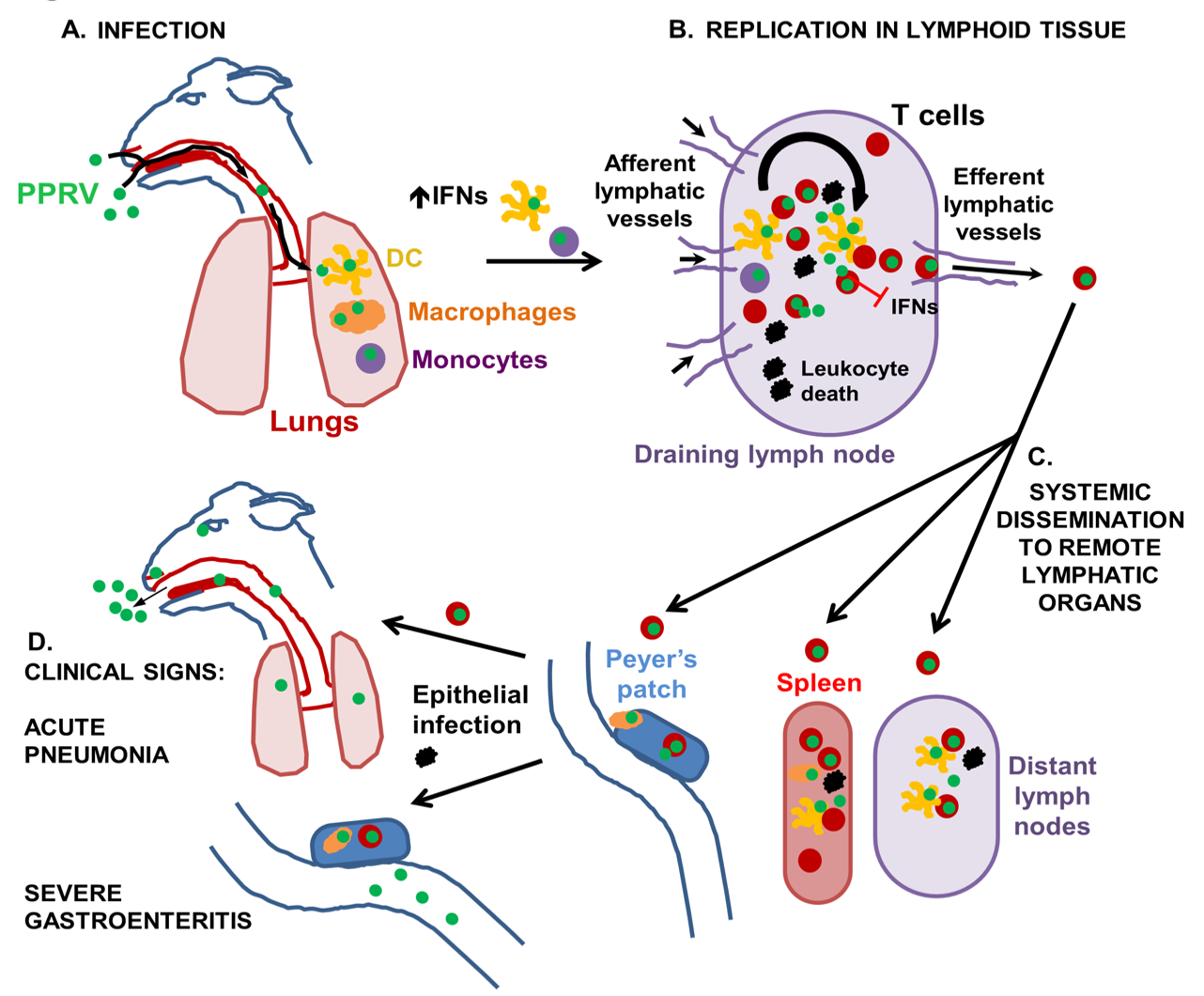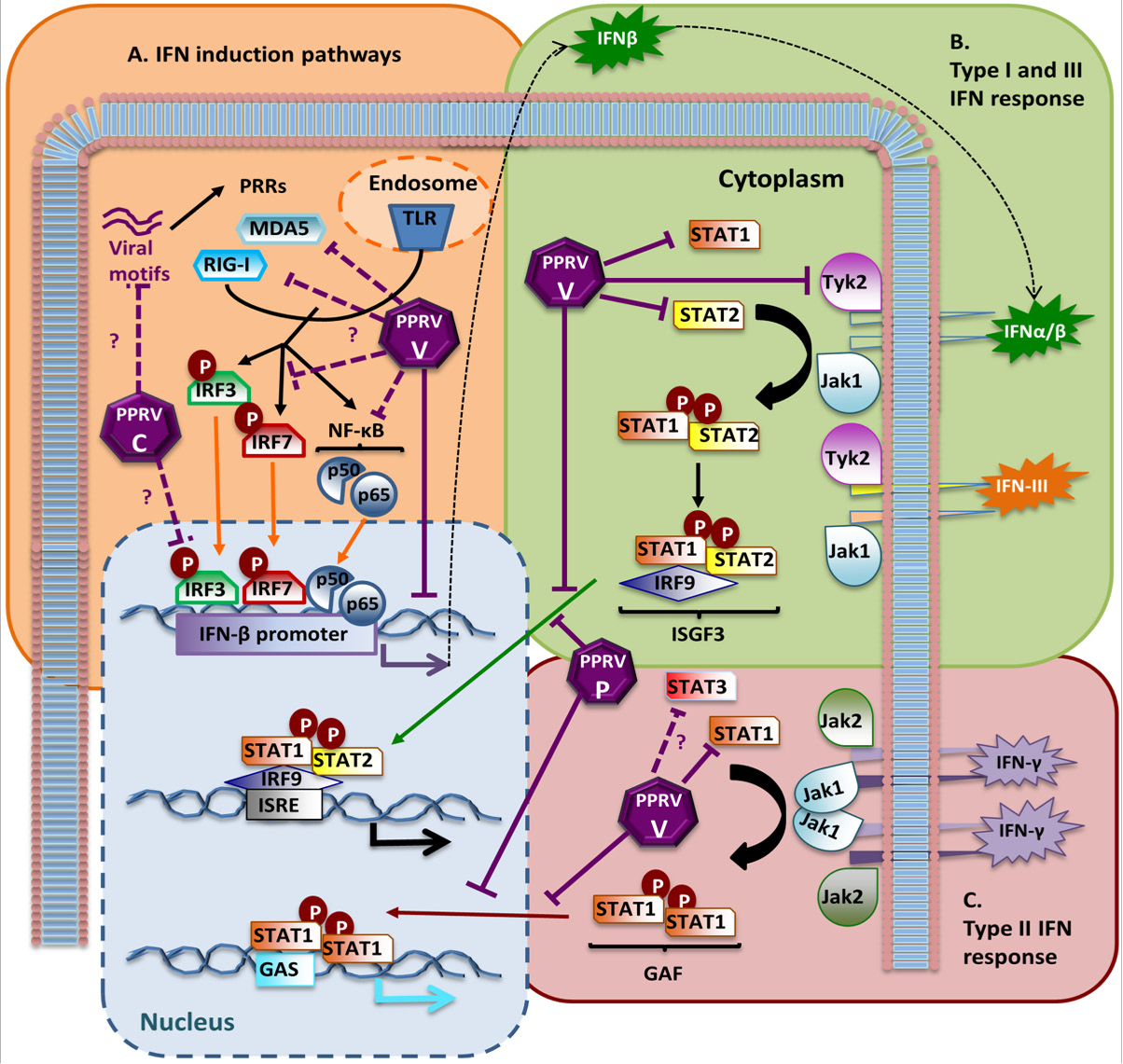PPRV-Induced Immunosuppression at the Interface of Virus-Host Interaction
PPRV-Induced Immunosuppression at the Interface of Virus-Host Interaction
Jose M. Rojas, Noemi Sevilla and Veronica Martin
Figure 1: PPRV infection model: A) PPRV infection occurs through the respiratory tract, where antigen presenting cells (APC) (possibly dendritic cells (DC), macrophages and monocytes) are infected. Early infection results in IFN induction probably leading to APC migration to the draining lymph node. B) Once infected APC reach the draining lymphatic organ, where PPRV further replicates, causing cell death. PPRV blockade of IFN response and signaling helps the virus immunosuppress the host and spreading. C) PPRV is then disseminated systemically (probably through T cells) to distant lymphatic tissue where further replication and virus expansion can occur. D) Finally, PPRV infects epithelia, where more evident clinical signs of infection are detected (pneumonia and gastroenteritis) and high viral loads can be detected. It should be noted that virus shedding starts prior to severe clinical signs appear.
PPRV-V, -P and -C protein antagonism of IFN induction and response pathways. PPRV-V, -P and C protein can interfere with IFN signaling activity. Full lines indicate blocking effects reported for PPRV proteins, and dotted lines indicate blocking activity for other Morbillivirus proteins. A) V and C proteins interfere with IFN production. Viral motifs (e.g. double stranded RNA) can be recognized by pattern recognition receptors (PPRs). This leads to IRF3, IRF7 and NF-κB activation, which in turn promotes IFN-β induction. Morbillivirus C protein can impair IRF3 binding to the IFN-β promoter in the nucleus. Morbillivirus C protein can also limit viral replication and consequently limit the amount of viral motifs recognisable for PRRs. PPRV-V protein blocks IFN-β promoter activity, although the mechanism has yet to be elucidated. Morbillivirus V proteins can bind and block RIG-I and MDA5 activity. Morbillivirus V proteins can also suppress NF-κB activity and interacts with IKKα to block IRF7 activation. B) PPRV-V protein can block Tyk2 phosphorylation and block STAT1 and STAT2 activation, and thus impairs type I and III IFN responses. C) PPRV-V blockade of STAT1 also antagonizes type II IFN responses. Other Morbilliruses V protein can also block STAT3 activation, which can be involved in type II IFN responses and in transition from innate to adaptive immunity. PPRV-P protein can also inhibit type I and II IFN responses although to a lesser extent than PPRV-V protein.








